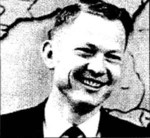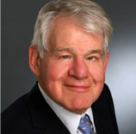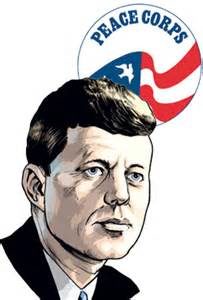Making Lemonade In The Maiatico Building, Part 3
In Shriver’s memo to Kennedy, Sarge had written, “We have submitted to your Special Counsel legal memoranda showing how the Peace Corps can be created as a program agency in the State Department within the existing Mutual Security framework….Congress can consider the program fully when it deals with the requests for specific legislation and funds for FY 1962.”
Shriver and the others who had drafted this memo and come up with the “idea of a Peace Corps” saw the new agency as being within the State Department so that it “can work closely with State and ICA, drawing on their personnel, services and facilities, particularly pending reorganization of the whole foreign aid program. But the Peace Corps should be a semi-autonomous entity with its own public face. This new wine should not be poured into the old ICA bottle.”
While the Band of Boys in the Mayflower Hotel thought this was a great way to create a new agency, it wasn’t seen that way at the White House. Gerard Rice in his book The Bold Experiment:JFK’s Peace Corps reported that Ted Sorensen, then Kennedy’s special counsel, told Shriver the Report was very different from what he had envisaged. The people around Kennedy were thinking of a small, low-cost addendum to the overall foreign assistance program, and here Shriver had produced this “Towering Task” concept, pushed by Wiggins and Josephson and also supported by Shriver, Wofford, and others where the Peace Corps would be established fast and big. Wiggins and Josephson were thinking of sending thirty-,fifty-, and even a hundred thousand PCVs overseas.
Rice writes, “Wiggins also felt strongly that if Kennedy did not set up the Peace Corps at the beginning of his administration by swift executive action, then there was a possibility the program might never see the light of day.”
[Harris Wofford tells the story that Kennedy had asked Max Millikan of MIT, a long-standing economic adviser, to work up a ‘Peace Corps idea’ for him. Kennedy reportedly was worried that “naive young Americans” might become embroiled in some debacle overseas and that blame would be changed to Kennedy’s inexperience in foreign affairs.
(Remember the Bay of Pigs?)
Millikan came up with a lengthy memorandum entitled, “An International Youth Service” that favored a corps that would be limited and tentative, a program of only “several hundred young people in the first year or two.” Volunteers, for example, would go to Nigeria, live in college dormitories, and go out during the day to work in the nearby community. Wofford said Shriver gave this memorandum to prospective Peace Corps candidates and if they agreed with Millikan’s limited approach to the creation of the Peace Corps, they weren’t hired.
While the Peace Corps Executive action idea hit a wall inside the White House, it got help from Larry O’Brien, special assistant to Kennedy for congressional relations. He liked the idea and thought using it to create the Peace Corps would be the “effective tactic.”
Shriver on a one-on-one with Kennedy convinced him to use the Executive Order approach and the Peace Corps became the only program of the Kennedy administration allowed the distinctive status of an “emergency agency.”
But Kennedy was taking a political risk, as Rice points out, in that he was making a political and personal pledge to the new agency, i.e. what the Mayflower Gang had “dreamed up.” He was focusing public attention on it: newspapers were writing daily stories about its creation, watching its development.
Also, coming into focus and national attention were the major figures of the early administration. Besides Shriver, the new faces of the new agency were Wofford, Wiggins, and Josephson. These were not household names, and more new names to Washington were being added quickly to this list. It seemed that everyone who wanted to work for the Kennedy Administration wanted to work at the Peace Corps.
But there were more problems for the Peace Corps. One was the placement of Volunteers. No country had requested those 25,000 people who had already written Kennedy asking to “do something for their country.”
The other problem was the more touchy: how independent would the Peace Corps be in Foggy Bottom. As Bill Moyers put it, “The old-line employees of State and AID coveted the Peace Corps greedily. It was natural instinct; established bureaucracies do not like competition from new people.
Shriver, Wofford, Wiggins, and Josephson were in many ways new people. The only different was that they were smarter then the ‘old-line employees’ when it came to playing bureaucratic games and they were about to show Foggy Bottom how Peace Corps “touch football” was played in the new Kennedy administration.




No comments yet.
Add your comment